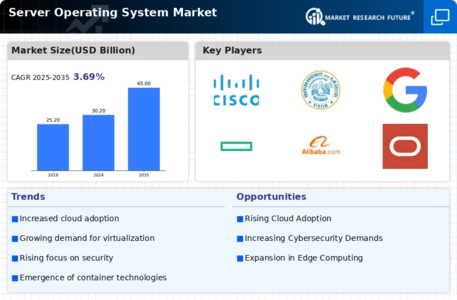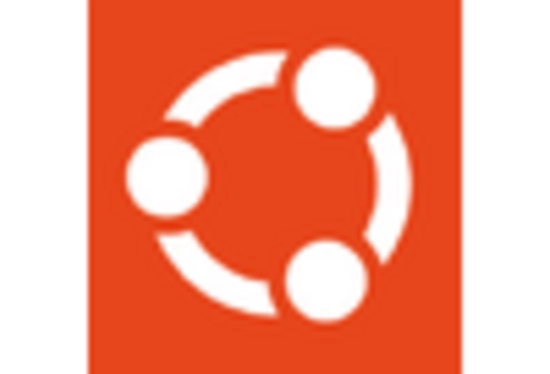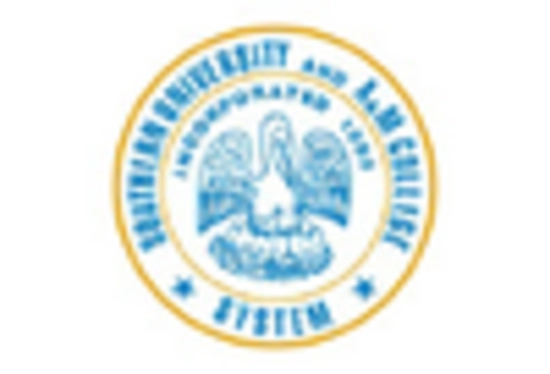The Server Operating System Market is currently characterized by a dynamic competitive landscape, driven by rapid technological advancements and increasing demand for cloud-based solutions. Major players such as Microsoft (US), Red Hat (US), and Oracle (US) are strategically positioning themselves to leverage these trends. Microsoft (US) focuses on integrating its Azure cloud services with its server operating systems, enhancing interoperability and user experience. Red Hat (US), known for its open-source solutions, emphasizes partnerships with cloud providers to expand its market reach. Oracle (US) continues to innovate its offerings, particularly in database management systems, which are increasingly integrated with its server operating systems. Collectively, these strategies foster a competitive environment that prioritizes innovation and customer-centric solutions.
Key business tactics within the Server Operating System Market include localizing manufacturing and optimizing supply chains to enhance responsiveness to market demands. The market structure appears moderately fragmented, with several key players exerting considerable influence. This fragmentation allows for niche players to thrive, while larger companies leverage their resources to capture significant market share. The collective influence of these key players shapes the competitive dynamics, as they continuously adapt to evolving customer needs and technological advancements.
In September 2025, Microsoft (US) announced a significant upgrade to its Windows Server platform, incorporating advanced AI capabilities to enhance security and performance. This strategic move is likely to solidify Microsoft’s position as a leader in the market, as organizations increasingly seek integrated solutions that leverage AI for operational efficiency. The upgrade not only addresses current market demands but also positions Microsoft favorably against competitors who may lag in AI integration.
In August 2025, Red Hat (US) expanded its partnership with Amazon (US) to enhance its cloud-native offerings. This collaboration aims to provide customers with more robust hybrid cloud solutions, reflecting a growing trend towards cloud adoption. The strategic importance of this partnership lies in its potential to attract a broader customer base, particularly enterprises looking for flexible and scalable solutions. By aligning with Amazon, Red Hat enhances its competitive edge in the rapidly evolving cloud landscape.
In July 2025, Oracle (US) launched a new version of its Oracle Linux operating system, designed specifically for enterprise environments. This release emphasizes security and performance, catering to organizations that prioritize these aspects in their IT infrastructure. The strategic importance of this launch is underscored by the increasing demand for secure and efficient operating systems, particularly in sectors such as finance and healthcare, where data integrity is paramount.
As of October 2025, current competitive trends in the Server Operating System Market are heavily influenced by digitalization, sustainability initiatives, and the integration of AI technologies. Strategic alliances, such as those between Red Hat and Amazon, are shaping the landscape by fostering innovation and expanding market reach. Looking ahead, competitive differentiation is likely to evolve from traditional price-based competition to a focus on innovation, technological advancements, and supply chain reliability. Companies that can effectively navigate these trends will likely emerge as leaders in the market.


















Leave a Comment